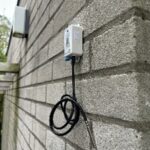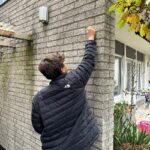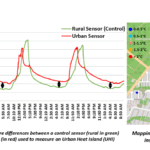Last autumn, a group of S6 students from the course Sustainability and Active Citizenship stepped outside the classroom to investigate a phenomenon that affects cities all over the world — the Urban Heat Island (UHI) effect.
The UHI effect occurs when materials like asphalt and concrete absorb heat during the day and release it slowly at night, making urban areas warmer than their rural surroundings. This can influence local climate, increase health risks during heatwaves, and affect urban ecosystems.

To explore how strong this effect is in our local area, the group began by forming their own hypotheses and guessing which areas might be warmer and why. They focused on factors such as building height, green spaces, and the distance between structures. Then they designed a hands-on experiment: over two weeks (October 22 to November 5, 2024), they placed temperature sensors at various sites around the city, including dense urban areas, green spaces, and residential zones .


The school grounds served as a control point, allowing students to compare the data collected from different environments. They also took panoramic photographs at each site to connect the temperature readings with visible environmental features such as vegetation and building density.

Their results were clear: urban areas were consistently warmer, sometimes by as much as 2°C, than green or open spaces. Tall buildings and narrow streets trapped more heat, while tree-filled areas cooled down more quickly.

The project provided the possibility to learn scientific methods and data analysis of a long-term experiment and showed how local action can inspire sustainable urban planning. Based on their findings, the students proposed practical solutions such as green roofs, shaded pathways, and tree planting to reduce heat buildup in urban spaces.
This year’s S6 „Sustainability and Active Citizenship“ course will continue to carry out further measurements and investigate concrete solutions to reduce Urban Heat Islands.
Project Partners:
This investigation was made possible thanks to the collaboration between students, teachers, and external experts.
Students: Harshil Singh Ravi, Sofiia Vavrysh, Kaloyan Mihaylov, Krithik Manivel, Aryan Verma, Miel Nicholls, Sean Nießen.
Teachers: Michela Dreusch, Jonas Prungel-Domin
Researchers and professionals: Quentin Czerwiec (IEM–Savoirs Vivants), Roland Pellenq (IEM), Michel Bayer (CAUE67)
Written by Sofiia Vavrysh & Kaloyan Mihaylov (S7ENA Sustainability & Active Citizenship)
 De
De en
en fr
fr

